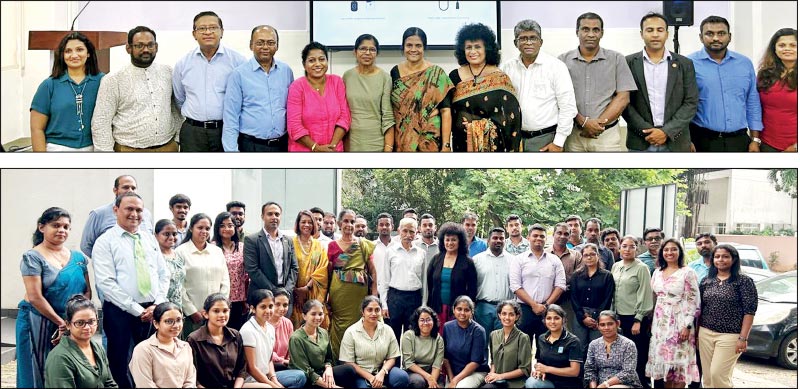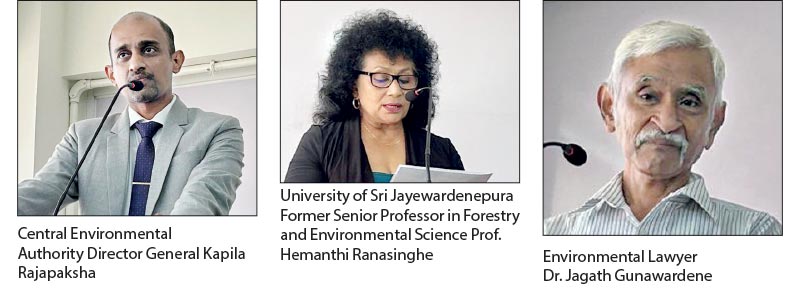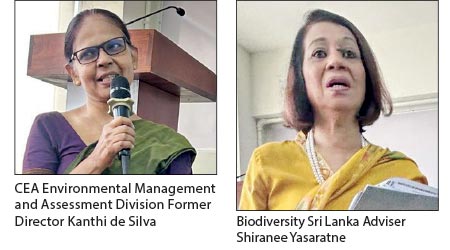Friday Nov 21, 2025
Friday Nov 21, 2025
Friday, 21 November 2025 00:00 - - {{hitsCtrl.values.hits}}


 The Institute of Environmental Professionals Sri Lanka (IEPSL) successfully concluded its comprehensive Environmental Impact Assessment (EIA) Intensive Training Course from 10 to 14 November at GAP HQ, Wijerama Mawatha, Colombo 07.
The Institute of Environmental Professionals Sri Lanka (IEPSL) successfully concluded its comprehensive Environmental Impact Assessment (EIA) Intensive Training Course from 10 to 14 November at GAP HQ, Wijerama Mawatha, Colombo 07.
Organised in collaboration with GAP HQ and with the blessings and guidance of the Central Environmental Authority (CEA), this landmark five-day program brought together 42 passionate professionals from diverse sectors—the public service, private industry, academia, and civil society organisations—all united by a common commitment to strengthen Sri Lanka›s capacity in environmental assessment, impact management, and sustainable development.
The training was inaugurated by IFPSL President Asela Iddawela, with inspiring addresses from Central Environmental Authority Director General Kapila Rajapaksha, and Dr. Pradeep Gajanayake on behalf of Prof. Rajith Dissanayake, Founder of GAP HQ, who collectively emphasised the transformative role of EIA as both a regulatory instrument and a decision-making compass guiding the nation toward environmentally sound and socially inclusive development.
The curriculum was thoughtfully designed as a comprehensive learning journey, guiding participants through the entire environmental assessment process from inception to completion.
The course systematically unfolded the major milestones of EIA practice, beginning with the critical initial steps of screening and scoping—where participants learned to determine whether projects require environmental assessment and how to establish the boundaries and depth of study through careful preparation of Terms of Reference. The journey continued through the foundational work of preparing environmental assessment reports, where participants mastered the art and science of identifying baseline conditions that paint a complete picture of the existing environment before project intervention. Building on this foundation, the training delved into impact identification and prioritisation, teaching participants to recognise both obvious and subtle environmental changes, and to distinguish between significant impacts requiring immediate attention and lesser effects that can be managed through routine measures.
The program then equipped participants with the knowledge to identify appropriate mitigation actions to address adverse impacts, exploring the hierarchy of avoidance, minimisation, restoration, and offset strategies. Particular emphasis was placed on preparing EIA reports that meet the rigorous standards of project approving agencies, ensuring that assessments are not merely academic exercises but practical tools for environmental governance.
A cornerstone of the training was the comprehensive session on preparing Environmental Management Plans (EMPs) and Environmental Monitoring Plans, which participants came to understand as essential instruments for ensuring sustainability throughout the entire lifecycle of development projects—from construction through operation to eventual decommissioning.
This enriching learning experience was made possible through the expertise of a distinguished panel of resource persons who brought decades of combined experience to the classroom. Prof. Hemanthi Ranasinghe, a former Senior Professor in Forestry and Environmental Science from the University of Sri Jayewardenepura, served as Course Coordinator and delivered key sessions on ecological impact assessment and writing EIA reports.
Biodiversity Sri Lanka Advisor Shiranee Yasaratne, illuminated the need for integration of EIA in the project planning cycle. Freelance Environmental Consultant Ramani Ellepola shared invaluable insights from three decades of EIA practice in Sri Lanka. Environmental Lawyer Dr. Jagath Gunawardene, expertly navigated participants through the policies, laws, and institutional arrangements governing EIA.
Asian Development Bank Environmental and Social Safeguard Specialist Saranga Gajasinghe, provided a global perspective on multilateral banking standards.
CEA Environmental Management and Assessment Division Director Nilmini Attanayake offered authoritative guidance on Sri Lanka›s EIA process, screening, scoping, and terms of reference development. Consultant Hydrologist Eng. Anura Ranwala contributed his technical expertise on physical impact assessment and the critical evaluation of project alternatives. Sociologist and Resettlement Specialist A. Amutharaj brought human dimensions to the fore through his sessions on social impact assessment and mitigation. Climate Change and Disaster Risk Management Specialist Rohan Coorey equipped participants with contemporary knowledge on integrating climate risks into environmental planning. University of Moratuwa Faculty of Engineering Senior Prof. Jagath Manatunga elucidated sophisticated methods in impact assessment and mitigation. Centre for Environmental Justice Environmental Officer Indika Rajapakse, championed the essential role of public participation and consultation. CEA Environmental Management and Assessment Division Former Director Kanthi de Silva shared her extensive experience in technical review and decision-making processes. Environmental Safeguard Specialist Ajith Ethugala guided participants through the practical preparation of environmental management plans. Prof. Prasanthi Gunawardene from the University of Sri Jayewardenepura rounded out the theoretical framework with sessions on environmental economics and extended cost-benefit analysis in EIA.
Theory found its perfect complement in practice during the transformative field visits to Port City Colombo and the Aruwakkalu Waste Management Transfer Station in Kelaniya. These excursions lifted participants from the classroom and immersed them in the complex realities of large-scale development projects, where environmental management is not an abstract concept but a daily operational imperative.
At Port City Colombo, participants witnessed how environmental safeguards are woven into one of the region›s most ambitious urban development projects, observing firsthand the interplay between engineering ambition and environmental responsibility. The visit to the Aruwakkalu Transfer Station in Kelaniya provided equally valuable insights into waste management infrastructure, revealing the practical challenges of managing solid waste while minimising impacts on surrounding communities and ecosystems.
These real-world exposures proved transformative, as participants could see, touch, and question the environmental management systems that exist beyond the pages of reports and regulations.
Building on these field experiences, participants were challenged to prepare their
own versions of Environmental Management Plans based on the projects they had visited. Divided into two groups, the participants worked ardently throughout the latter part of the course, applying their newly acquired knowledge to develop comprehensive management strategies that addressed the environmental challenges they had observed. The groups tackled their assignments with remarkable dedication, engaging in animated discussions, debating mitigation approaches, and crafting monitoring frameworks that reflected both technical rigor and practical feasibility. Their efforts culminated in formal presentations on the final day of the course, where each group presented their environmental management plans to a distinguished panel of experts. The presentations showcased not only the technical competence gained during the week but also the participants› growing confidence in their ability to bridge the gap between environmental science and project implementation. The expert panel provided constructive feedback, commending the thoughtfulness of the approaches while offering seasoned perspectives on enhancing the plans› effectiveness.
The program concluded with a certificate awarding ceremony that celebrated the participants› dedication and achievement. As certificates were distributed, there was a palpable sense of accomplishment in the room—these were not merely documents of attendance but symbols of a transformative learning experience that equipped 42 professionals with the knowledge, skills, and confidence to elevate the practice of environmental assessment in Sri Lanka. The ceremony was marked by expressions of gratitude to the resource persons, organisers, and GAP HQ for creating an enabling environment for this intensive learning experience.
Looking ahead, IEPSL reaffirmed its commitment to offering more specialised courses across diverse fields related to sustainable development and environmental conservation. The Institute recognises that empowering citizens with knowledge and skills in environmental management is fundamental to achieving the nation›s sustainability goals. By continuing to provide such high-quality training programs, IEPSL aims to build a robust community of environmental professionals capable of steering Sri Lanka toward a future where economic development and environmental stewardship advance hand in hand. As one participant eloquently noted during the closing session, «This course has not just taught us about EIA—it has inspired us to become guardians of our environment, equipped with the tools to ensure that every development project contributes to, rather than detracts from, the wellbeing of our people and planet.

